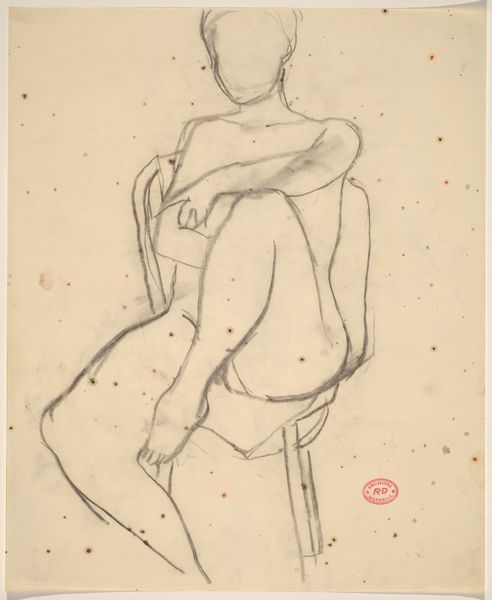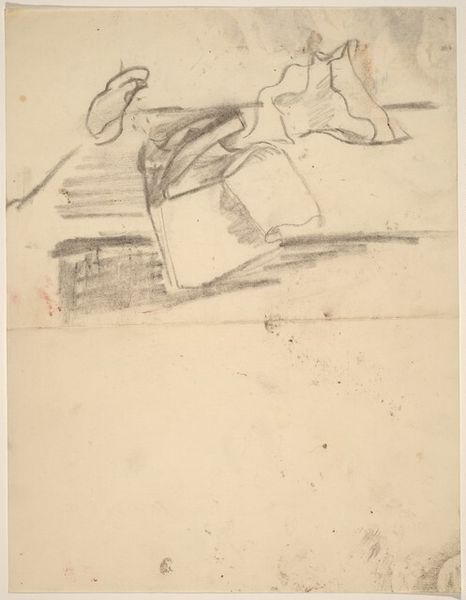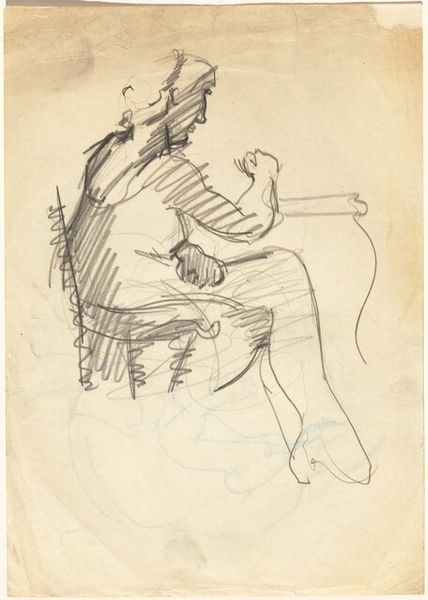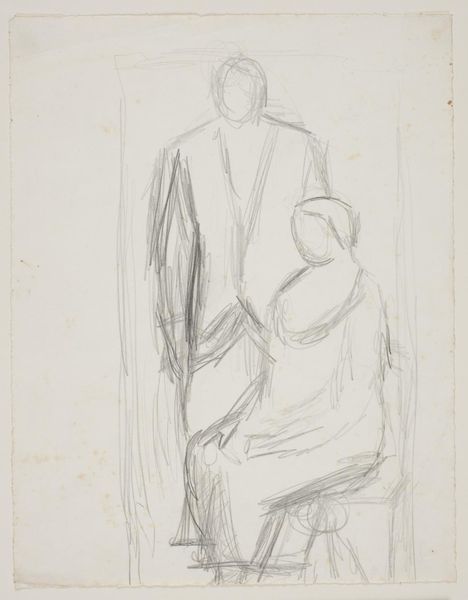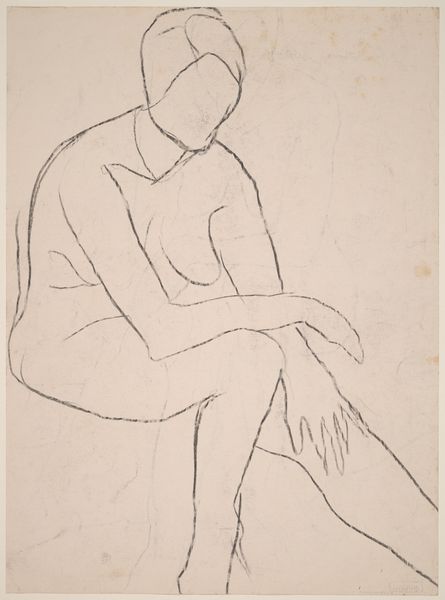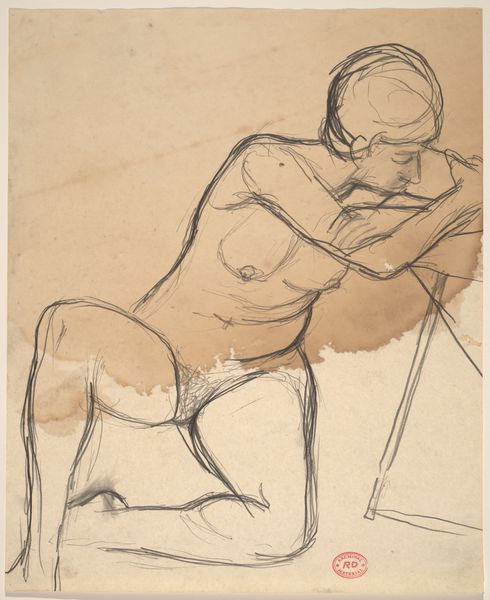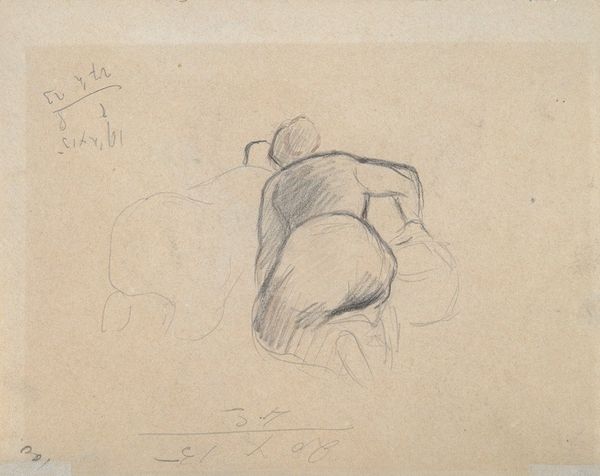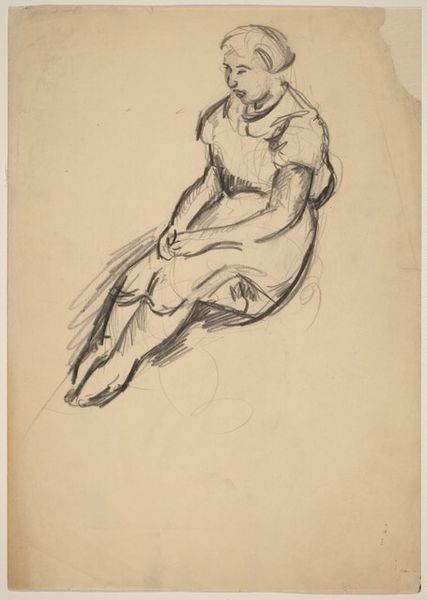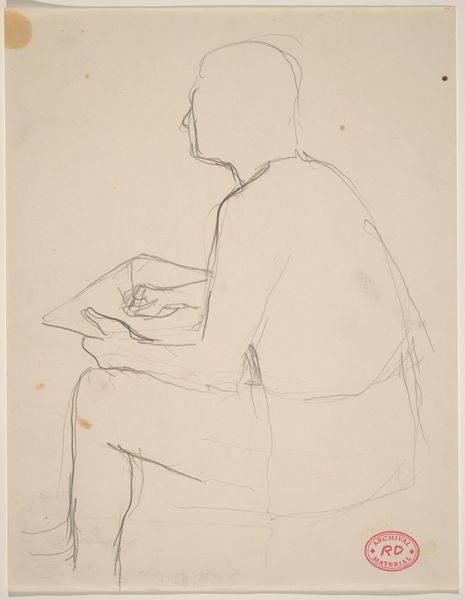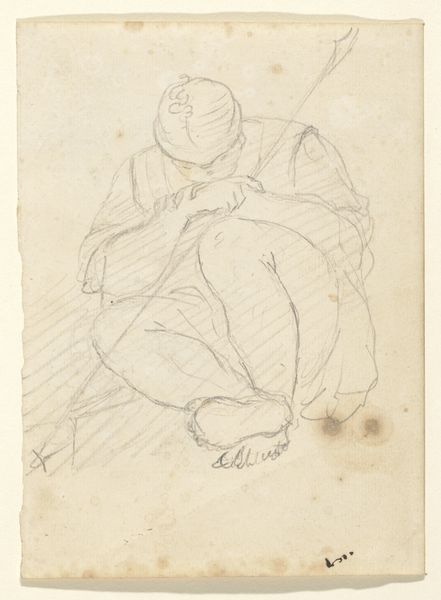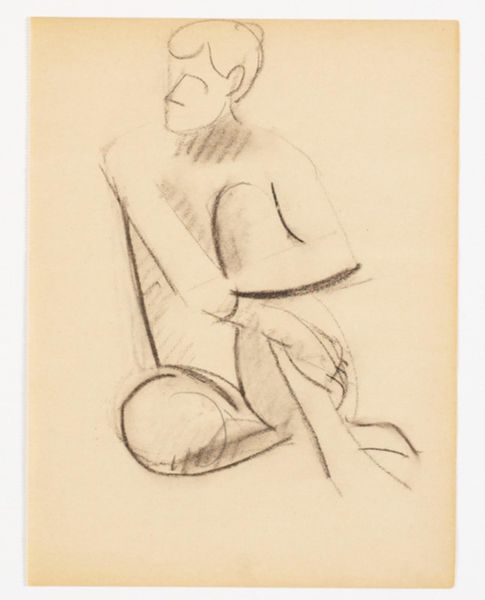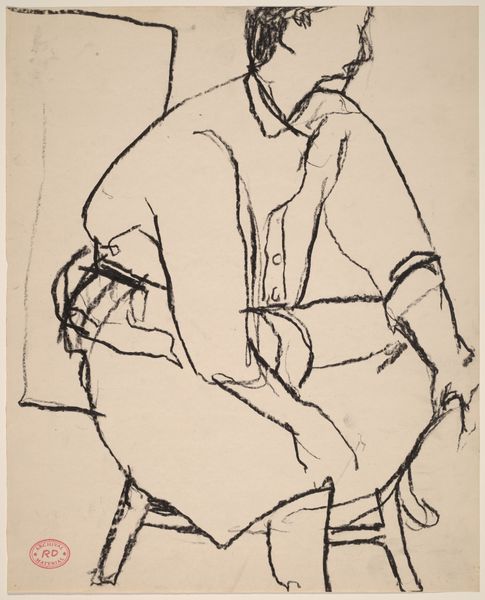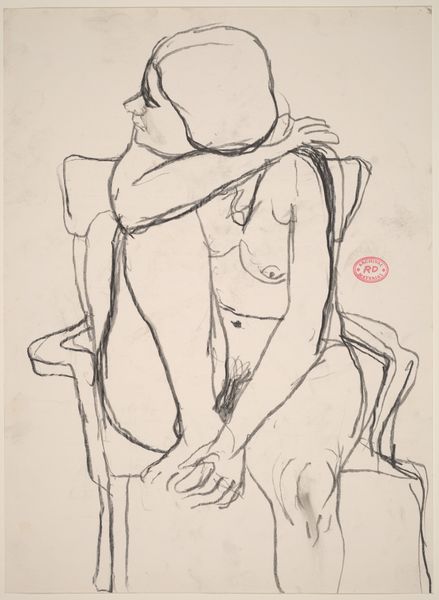
drawing, pencil
#
drawing
#
pencil sketch
#
figuration
#
pencil
#
abstraction
#
nude
Dimensions: 213 mm (height) x 180 mm (width) (bladmaal)
Curator: Editor: We’re looking at Vilhelm Lundstrom’s "Kompositionsstudie med 2 nøgne kvinder," made between 1926 and 1927. It’s a pencil drawing housed at the SMK in Copenhagen. The sketch-like quality of the nude figures makes me think about the artist's process. What strikes you about this drawing? Curator: Immediately, I'm drawn to the labor embedded within. The visible pencil strokes, the revisions, they all speak to a physical act of creation. Consider the social context: interwar period, shifting views on the body. What kind of pencils did Lundstrom use? The grade, the manufacturer— these details impact the final image. How does this interplay of labor and material affect your perception of "high art"? Editor: That's interesting! I hadn't considered the specific pencils. It blurs the lines between a preliminary sketch and a finished work. How do you see the “means of production” reflected in the artwork itself? Curator: Precisely! Look at the repeated lines; they indicate a searching process, a physicality. Lundstrom's choice of paper too – its texture would interact with the pencil, impacting the lines themselves. He is creating value through a very traditional method; pencil to paper. But how does it challenge traditional class divisions, since drawings like this could become mass-produced and consumed by more people? Editor: It democratizes the image, in a way. Bringing art to the masses through reproductive technologies! But it's also still tied to Lundstrom's skill, his hand. Curator: Exactly! The tension lies there – the unique touch versus potential mass consumption. So, how has analyzing Lundstrom's materials and process changed your initial reading of the artwork? Editor: I now see it less as a simple study and more as an artifact loaded with socio-economic information. It has been quite enlightening, thinking of the materials and making of art this way! Curator: And perhaps, prompts us to question what we traditionally value in art, who has access to it, and how it is produced.
Comments
No comments
Be the first to comment and join the conversation on the ultimate creative platform.
